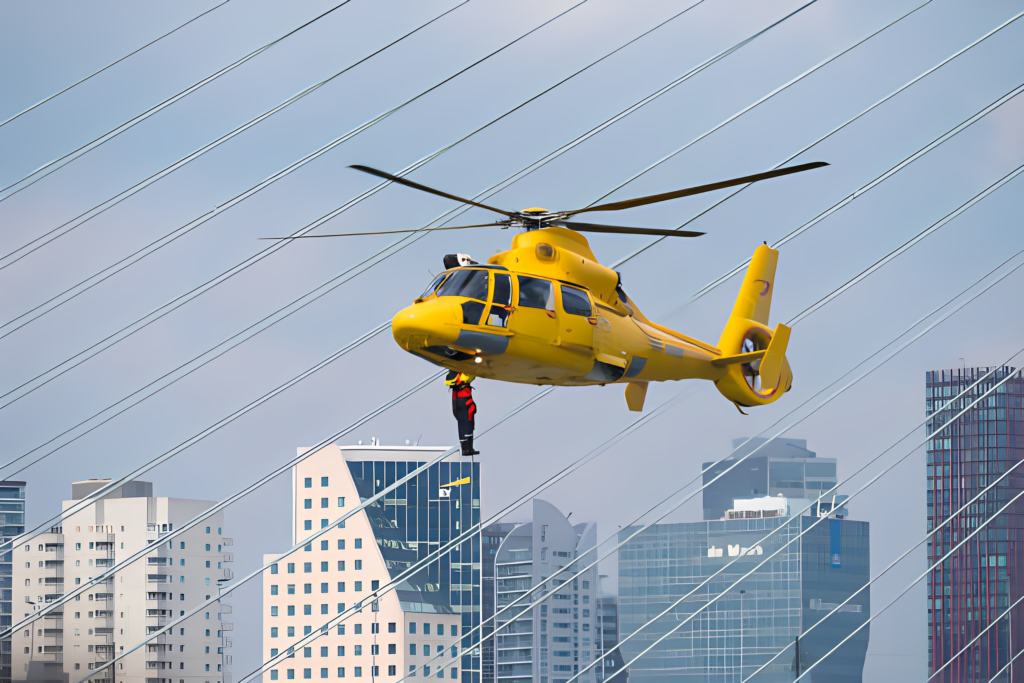Airplanes have revolutionized the world of emergency medical services, particularly in the field of air ambulance operations. These flying marvels serve as lifelines, providing swift and efficient transportation for critically ill or injured individuals to medical facilities. In this blog post, we will explore the vital role of airplanes in emergency medical services and delve into the fascinating world of air ambulance operations.

The Importance of Air Ambulance Operations
When medical emergencies occur in remote or inaccessible areas, time becomes a critical factor in saving lives. Air ambulance operations bridge the gap by swiftly transporting patients to appropriate medical facilities. Airplanes equipped with medical equipment and staffed by specialized medical personnel offer a mobile intensive care unit in the sky.
1. Enhancing Accessibility
One of the primary advantages of air ambulance services is their ability to reach remote and isolated regions that are not easily accessible by road. These areas may include rugged terrains, mountains, or remote islands. Airplanes, with their ability to take off and land in various environments, can significantly reduce response times and ensure that patients receive timely medical attention.
2. Rapid Response and Timely Transportation
In medical emergencies, every minute counts. Air ambulance services provide rapid response times, ensuring that critically ill or injured individuals receive prompt medical attention. Equipped with advanced life support systems and trained medical personnel, air ambulances offer timely transportation to specialized medical facilities, often surpassing ground transportation in terms of speed and efficiency.
3. Specialized Medical Care
Airplanes used for air ambulance operations are equipped with state-of-the-art medical equipment to provide critical care during transportation. These flying medical units have facilities such as cardiac monitors, ventilators, defibrillators, and other life-saving devices. Additionally, highly trained medical professionals, including doctors, nurses, and paramedics, are onboard to provide specialized medical care throughout the journey.
The Science of Airplanes in Emergency Medical Services
Behind the scenes, several factors contribute to the success of air ambulance operations. Understanding the science behind airplanes helps us appreciate the complex interplay of various elements that make these life-saving missions possible.
1. Aerodynamics and Flight Principles
The design and aerodynamics of airplanes play a pivotal role in their performance during air ambulance operations. To fly efficiently and reach their destinations quickly, airplanes must adhere to principles of lift, drag, and thrust. Understanding these principles allows aircraft to maneuver through the air, even under demanding conditions, ensuring a smooth and safe journey for patients.
2. Paper Airplanes: A Lesson in Flight
While paper airplanes may seem like child’s play, they offer valuable insights into the fundamentals of flight. Learning how to make a paper airplane can be an educational and engaging activity for both children and adults. By experimenting with different designs, folding techniques, and wing configurations, we can better comprehend the principles of flight that underpin air ambulance operations. Check out for an in-depth exploration of the flight science behind paper airplanes.
Frequently Asked Questions (FAQs)
To address common queries about air ambulance operations and airplanes in emergency medical services, we have compiled a list of frequently asked questions:
Making a paper airplane is a fun and creative activity. Check out this step-by-step guide on our website for detailed instructions and designs.
There are countless paper airplane designs to explore. Some popular choices include the classic dart, the Nakamura lock, and the Zazoom. Discover more designs and instructions on Liftndrift’s paper airplane designs page.
Creating a paper airplane that flies a long distance requires the right design and folding techniques. Visit our website for tips and tricks to maximize your airplane’s flight range.
Absolutely! If you’re new to making paper airplanes, there are plenty of beginner-friendly designs available. Explore Liftndrift’s paper airplane for beginners section for simple yet impressive designs.
Achieving great distance and speed requires a carefully crafted design. Discover the top picks for the best paper airplane for distance and speed on our website.
Yes, paper airplanes can be a fantastic activity for children, fostering creativity and curiosity while teaching them about flight. Explore a variety of paper airplane designs suitable for kids on Liftndrift’s paper airplanes for kids page.
Remember, while paper airplanes provide an exciting way to explore the principles of flight, air ambulance operations involve sophisticated aircraft and medical expertise to ensure the safety and well-being of patients.
Airplanes have transformed emergency medical services by enabling swift transportation through air ambulance operations. These flying medical units offer rapid response, specialized care, and enhanced accessibility to remote areas. By understanding the science behind airplanes and exploring the fundamentals of flight through paper airplane designs, we can appreciate the intricate role airplanes play in saving lives.
Next time you fold a paper aeroplane, take a moment to reflect on the incredible machines that carry out life-saving missions in the sky. For more information about paper airplanes, flight science, and air ambulance operations, visit our website—your go-to resource for all things aviation and paper airplanes.

